Uncertainty about the economy, a war in Europe, and the combative political environment have all been a consistent backdrop to AEC industry forecasts. And this year’s forecast proves to be no different. The competition for top talent continues to rage on. And, as if that persistent constraint weren’t enough, firms are faced with the prospect of working with clients who have increased expectations around their digital prowess.
Hinge’s annual research study on the fastest growing AEC firms showed that while many firms adapted to the chaos caused by the Covid pandemic, many were hesitant to celebrate, and even successes could add strain: pointing to ongoing labor and supply chain constraints and continued uncertainty surrounding U.S. legislation.
In the newly released High Growth Study 2023: AEC Edition, we dig deeper into how one exceptional group of AEC firms is continuing to find growth and profitability in the face of heightened uncertainty and risk. (You can use the discount code, GROW50, to save 50% on your research report purchase.)
About the Study
This year’s study examined 120 Architecture, Engineering & Construction (AEC) firms, representing a combined revenue of over $8 billion and more than 22,000 employees. Firms of all sizes, global regions and key executive positions were represented in the study, with the vast majority of firms doing business in the United States.
While marketing spend declined among AEC firms this year, the study showed their median growth rate increased by almost 50% over the previous year. While the AEC industry has always shown a low investment in marketing relative to overall revenue, the data suggests some firms are finding ways to fight through the fog of uncertainty.
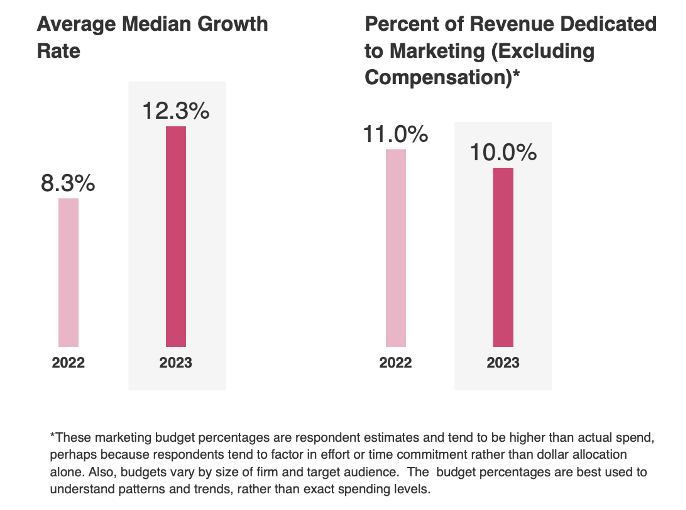
Technology
Perhaps one of the greatest advantages of High Growth AEC firms is when it comes to technology. Simply put, the fastest growing AEC firms are more digitally mature with more than 50% of the firms surveyed automating or managing their main processes with technology.
Furthermore, High Growth AEC firms are utilizing marketing and business development technologies more than their no growth peers—and especially when it comes to customer relationship management (CRM), enterprise resource planning (ERP), and business intelligence (BI). High Growth AEC firms are more frequent users of technology to track and attribute their marketing and business development activities than their No Growth counterparts. In fact, they are almost twice as likely to use metrics to evaluate the success of their events and thought leadership content.
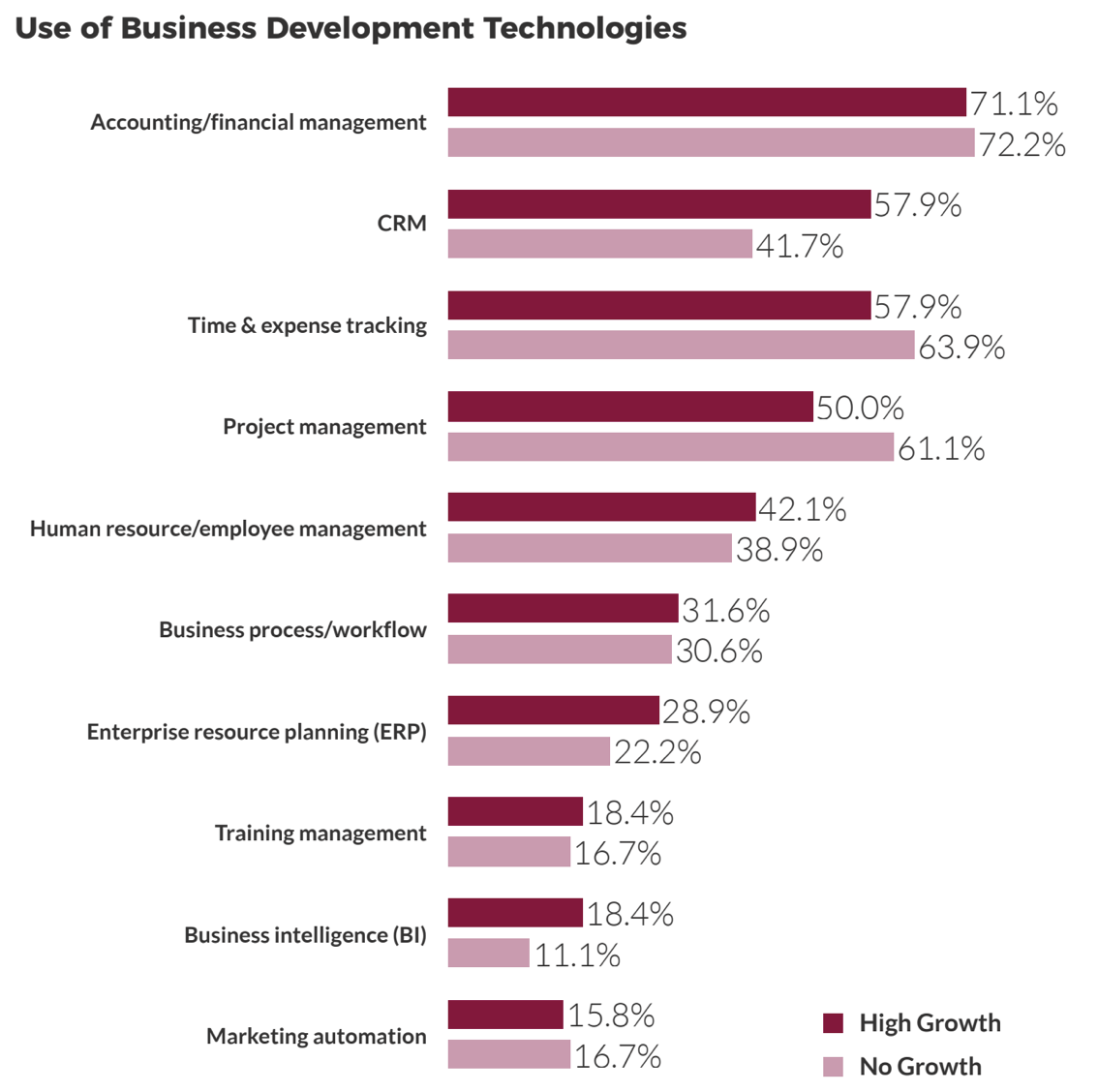
And while they might be more frequent users of technology, this year’s full study showed that AEC firms are actually less focused on automation and artificial intelligence than other professional service industries surveyed by Hinge.
It will be interesting to observe the impact of “tipping point” applications like ChatGPT have across professional services. While these systems are unlikely to replace actual expertise or quality thought leadership content, they may very well democratize qualitative elements and provide opportunities for efficiency at scale. Many less publicized, but similarly powerful tools are already integrated into BI, communications and data platforms. This will be an important technology to monitor and potentially harness for a competitive edge as others adapt and adopt at a slower pace. These technologies have already been transformational in B2C, B2B and media – professional services will not be too far behind.
Strategy
So how do high growth AEC firms and no growth firms differ as they look toward the future? While mergers and acquisitions (M&A) and succession planning will likely still play a part in AEC firms’ future growth strategies, this year’s study found that High Growth AEC firms are looking to learn more about technology-driven topics and trends such as automation, artificial intelligence, the internet of things (IoT), and smart buildings. Their no growth counterparts are still focused on established tech, like BIM.
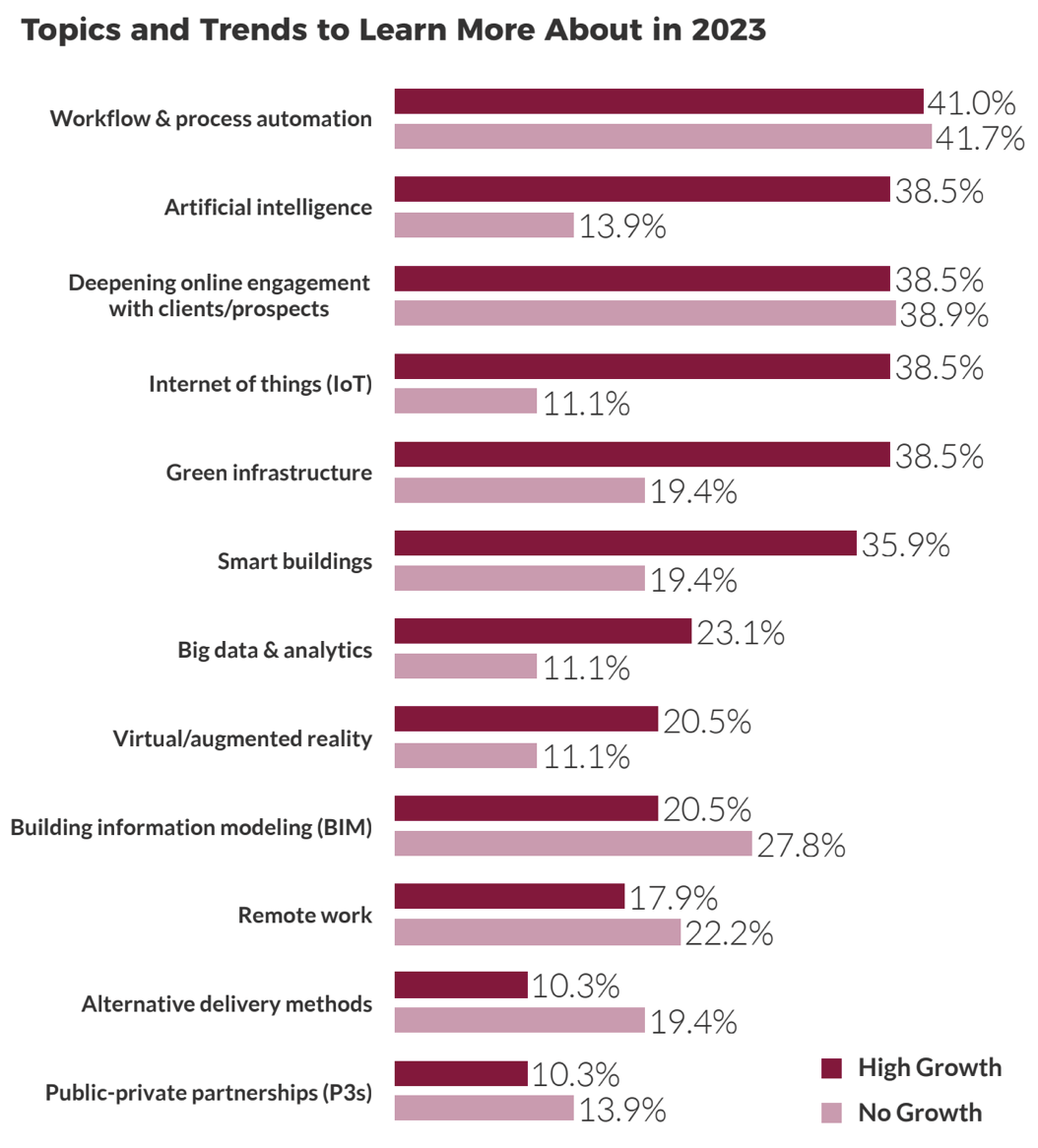
In addition to technology, high growth AEC firms are planning to focus more efforts on far-reaching market trends like ESG (Environmental, Social, and Governance) and green infrastructure.
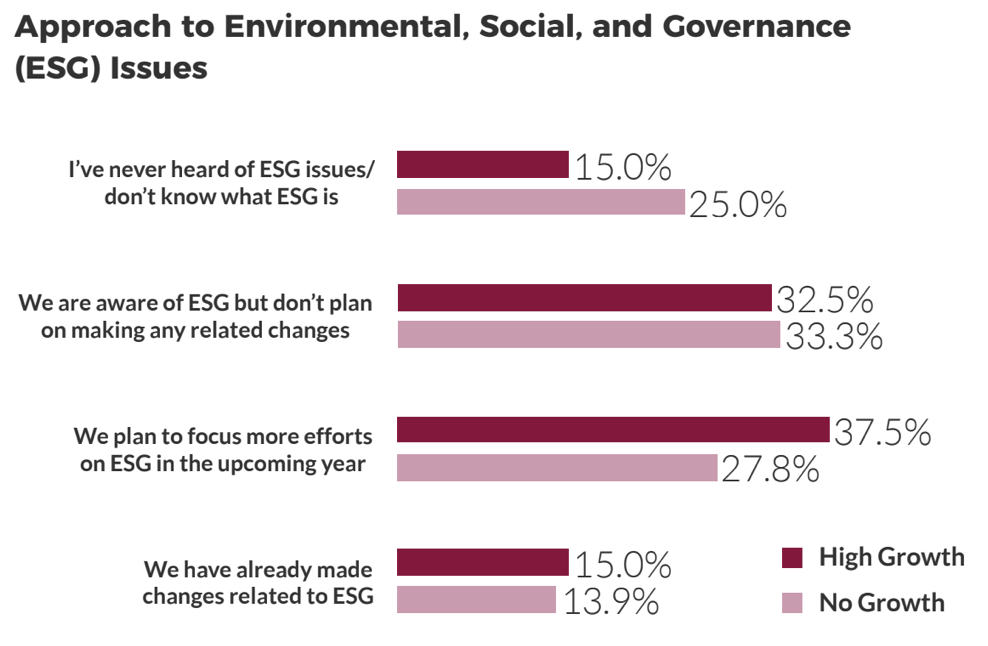
Marketing and Business Development
It comes as no surprise that high growth AEC firms are investing more in marketing than their no growth peers in order to drive their growth and profitability, but where do they see the most bang for their buck? Let’s compare and contrast marketing priorities and application of techniques to begin our assessment.
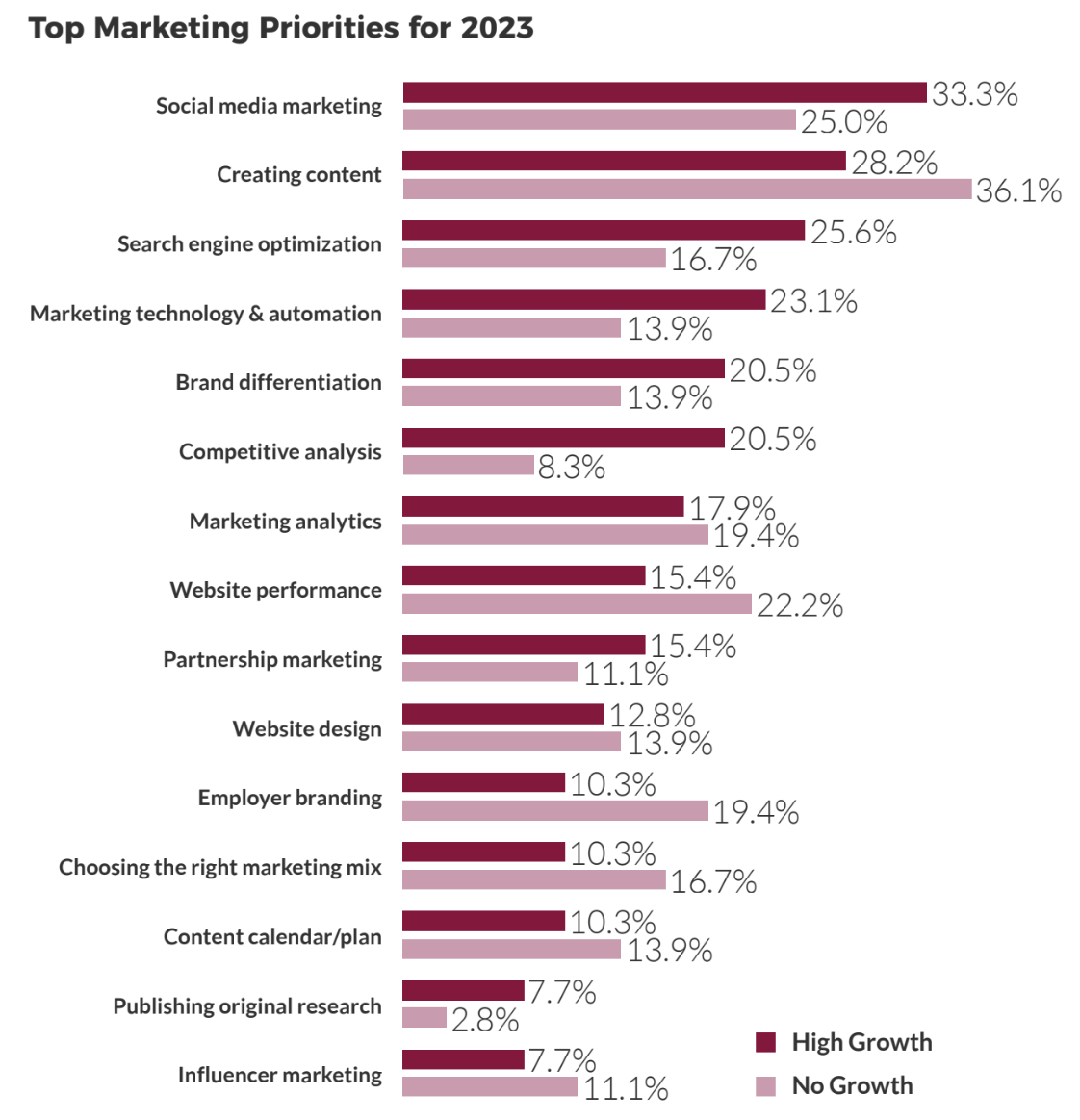
Perhaps one of the greatest learnings from this year’s study is where high growth AEC firms are prioritizing their time next, because after all, they must be doing something right! Social media marketing, a low-cost, low-effort digital technique, was identified as their top priority for 2023 while three times as many high growth AEC firms than no growth firms are utilizing social media advertising. (See Utilization of Marketing Techniques) This focus comes as the industry continues to adapt to the after-effects of a global pandemic and its impact on in-person event strategies. The fastest growing AEC firms are also prioritizing creating content and SEO. And firms are conducting more keyword research, using a programmatic, intentional approach along with publishing written blog posts.
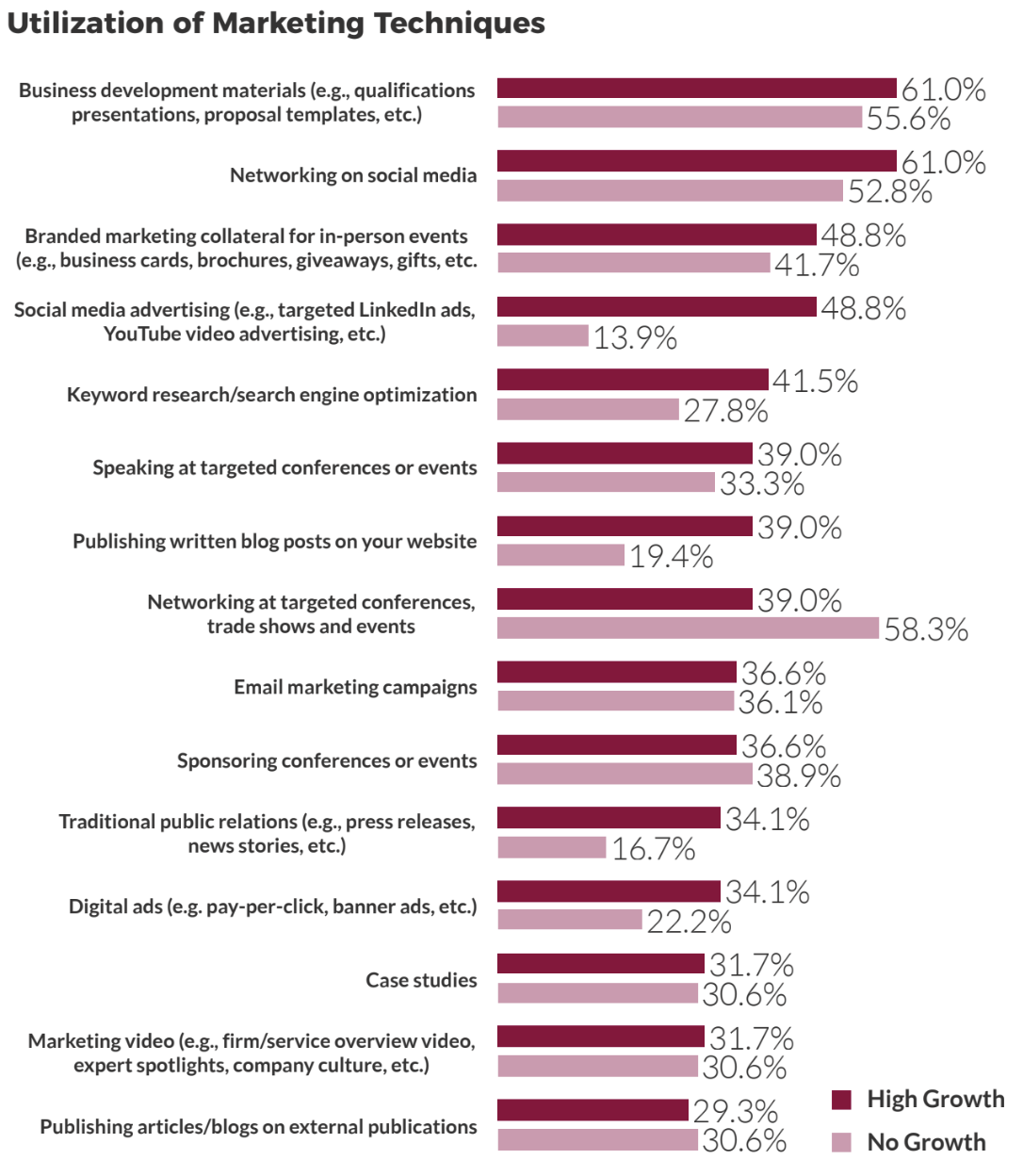
The AEC study also found that most No Growth AEC firms had low SEO maturity while High Growth AEC firms had implemented a high performing SEO program. This is not just the reporting of “traffic increases”, but the understanding of engagement and positive impact to business KPIs (including recruiting). Over 68% of the High Growth AEC firms surveyed rated their SEO maturity at a mid or high level. The SEO programs at No Growth firms, however, are largely undeveloped, unstructured, and ad-hoc.
High Growth AEC firms are increasing the marketing team’s involvement in developing opportunities, researching target audiences, and developing the firm’s employer branding because marketers have the skill sets to do so.
Talent
This brings us to recruiting. As the war for top talent has cooled slightly in other professional service industries, the challenge maintains its #1 status for AEC firms. But High Growth AEC firms are increasingly more focused on specific elements of the talent challenge such as: general changes in the workforce/succession planning, managing a remote workforce, and the expansion of new competitors. Identifying generational changes and the cultural, operational and skillset shifts they bring is an especially astute (and practical) insight.
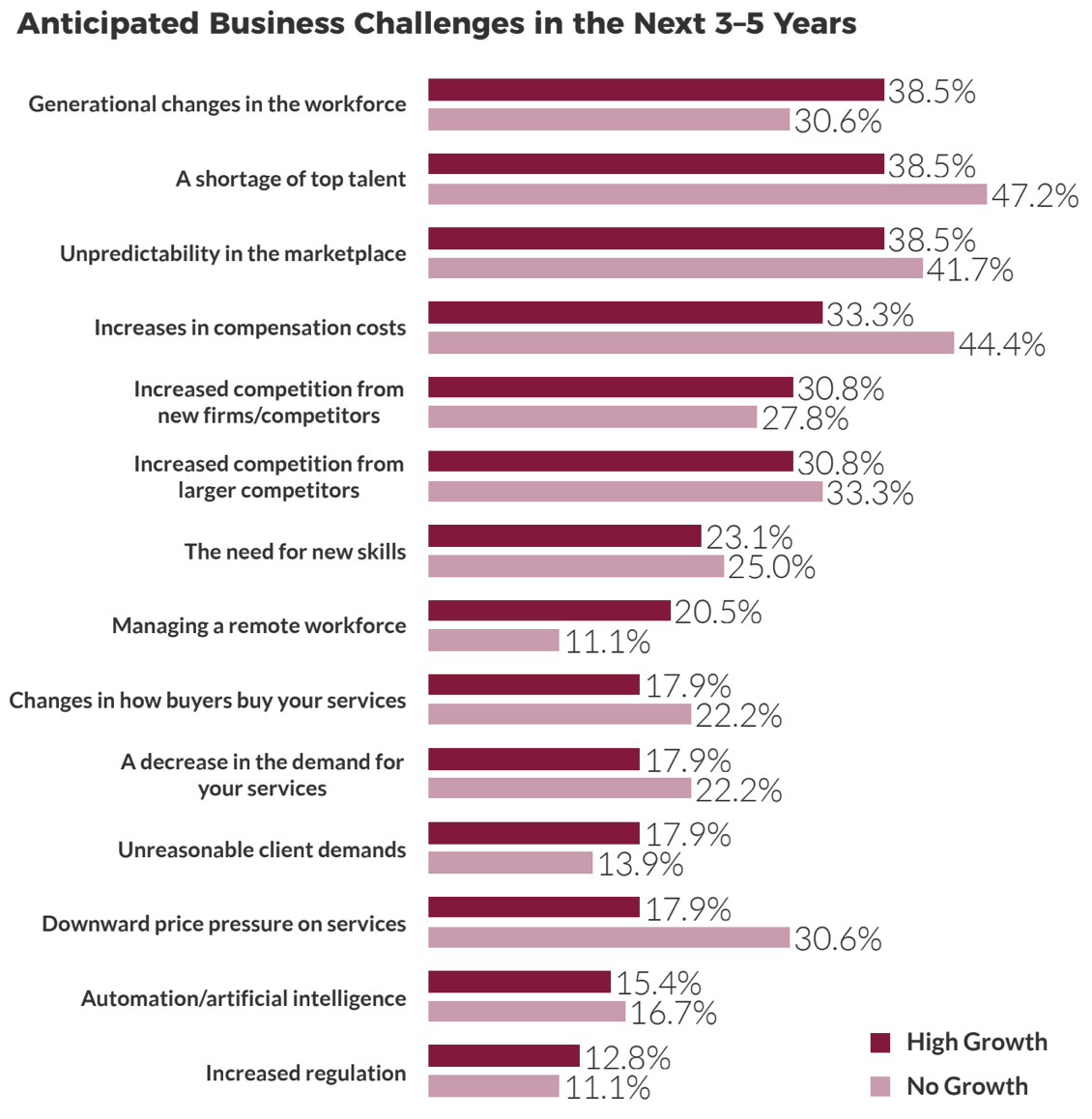
This year’s study also found that high growth AEC firms are still more likely to consult with outside agencies and freelancers to ensure their marketing needs are met and they can cover any critical skills gaps (e.g., design,strategy, SEO, copywriting.)
In Closing
While some AEC firms have introduced new tools and techniques to address an increasingly digital marketplace, others continue to struggle, searching for the perfect recipe to sustain growth.
But one thing has become clear: when it comes to digital engagement, business intelligence and opportunities for automation, having maturity, quality and measurable performance in each of these areas is key. Those AEC firms that use more digital marketing platforms and use them more proficiently, are experiencing more growth and at a faster pace.
(You can use the discount code, GROW50, to save 50% on your research report purchase.)


